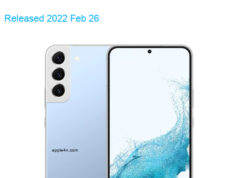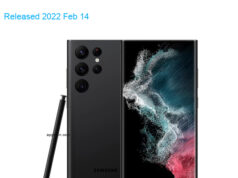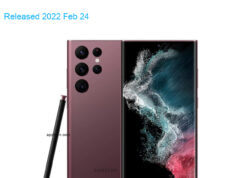| Brand | Xiaomi |
| Model | Mi 13 5G Premium Edition Global Dual SIM TD-LTE 256GB 2211133G |
| Released | 2023 Feb 26 |
| Announced | 2023 Feb 8 |
| Hardware Designer | Xiaomi |
| Manufacturer | Foxconn |
| Codename | Xiaomi Fuxi |
| General Extras | Haptic touch feedback , Tactile touch feedback |
| Device Category | Smartphone |
| Width | 71.5 mm |
| Height | 152.8 mm |
| Depth | 7.98 mm |
| Dimensions | 2.81×6.02×0.31 inches |
| Mass | 189 g |
| Platform | Android |
| Operating System | Google Android 13 (Tiramisu) |
| Software Extras | Voice Command , Business card recognition , Navigation software , Augmented Reality (AR) , Intelligent personal assistant , Voice Recognition , Face Recognition |
| CPU Clock | 3187 MHz |
| CPU | Qualcomm Snapdragon 8 Gen 2 5G SM8550-AB (Kalama), 2022, 64 bit, octa-core, 8192 Kbyte L3, 4 nm, Qualcomm Adreno 740 GPU |
| RAM Type | LPDDR5X SDRAM |
| RAM Capacity (converted) | 12 GiB RAM |
| Non-volatile Memory Interface | UFS 4.0 |
| Non-volatile Memory Capacity (converted) | 256 GB ROM |
| Display Hole | 1-hole |
| Display Diagonal | 161.54 mm |
| Resolution | 1080×2400 |
| Horizontal Full Bezel Width | 5.21 mm |
| Display Area Utilization | 89.4% |
| Pixel Density | 414 PPI |
| Display Type | AM-OLED display |
| Number of Display Scales | 16.8M |
| Display Refresh Rate | 120 Hz |
| Scratch Resistant Screen | Gorilla Glass Victus |
| Graphical Controller | Qualcomm Adreno 740 |
| A/V Out | No |
| Microphone(s) | stereo |
| Loudspeaker(s): | stereo |
| Audio Output: | USB Type-C |
| Supported Cellular Bands | GSM850 , GSM900 , GSM1800 , GSM1900 , UMTS2100 (B1) , UMTS1900 (B2) , UMTS1700/2100 (B4) , UMTS850 (B5) , UMTS800 (B6) , UMTS900 (B8) , UMTS800 (B19) , LTE2100 (B1) , LTE1900 (B2) , LTE1800 (B3) , LTE1700/2100 (B4) , LTE850 (B5) , LTE2600 (B7) , LTE900 (B8) , LTE700 (B12) , LTE700 (B13) , LTE700 (B17) , LTE800 (B18) , LTE800 (B19) , LTE800 (B20) , LTE1900 (B25) , LTE850 (B26) , LTE700 (B28) , LTE1500 (B32) , TD-LTE2600 (B38) , TD-LTE1900 (B39) , TD-LTE2300 (B40) , TD-LTE2500 (B41) , TD-LTE3500 (B42) , TD-LTE3600 (B48) , LTE1700/2100 (B66) , NR2100 (N1) , NR1800 (N3) , NR850 (N5) , NR2600 (N7) , NR900 (N8) , NR800 (N20) , NR700 (N28) , TD-NR2600 (N38) , TD-NR2300 (N40) , TD-NR2500 (N41) , NR1700/2100 (N66) , NR600 (N71) , NR1500 (N75) , TD-NR3700 (N77) , TD-NR3500 (N78) bands |
| Supported Cellular Data Links | GPRS , GPRS MSC33 , EDGE , UMTS , HSUPA , HSUPA 5.8 , HSDPA , HSPA+ 21.1 , HSPA+ 42.2 , DC-HSDPA 42.2 , LTE , LTE 100/50 , LTE 150/50 , LTE 300/50 , LTE 600/50 , LTE 1000/100 , LTE 1200/200 , LTE 1600 , LTE 2000/300 , NR 1500 , NR 2600 , NR 3700 data links |
| SIM Card Slot | e-SIM , Nano-SIM (4FF) |
| Complementary Phone Services | Voice transmission , Voice speaker , Vibrate , Speakerphone , ANC , HD Voice , VoLTE , ViLTE |
| Dual Cellular Network Operation | Dual standby |
| Sec. Supported Cellular Networks: | GSM850 , GSM900 , GSM1800 , GSM1900 , UMTS2100 (B1) , UMTS1900 (B2) , UMTS1700/2100 (B4) , UMTS850 (B5) , UMTS800 (B6) , UMTS900 (B8) , UMTS800 (B19) , LTE2100 (B1) , LTE1900 (B2) , LTE1800 (B3) , LTE1700/2100 (B4) , LTE850 (B5) , LTE2600 (B7) , LTE900 (B8) , LTE700 (B12) , LTE700 (B13) , LTE700 (B17) , LTE800 (B18) , LTE800 (B19) , LTE800 (B20) , LTE1900 (B25) , LTE850 (B26) , LTE700 (B28) , LTE1500 (B32) , TD-LTE2600 (B38) , TD-LTE1900 (B39) , TD-LTE2300 (B40) , TD-LTE2500 (B41) , TD-LTE3500 (B42) , TD-LTE3600 (B48) , LTE1700/2100 (B66) , NR2100 (N1) , NR1800 (N3) , NR850 (N5) , NR2600 (N7) , NR900 (N8) , NR800 (N20) , NR700 (N28) , TD-NR2600 (N38) , TD-NR2300 (N40) , TD-NR2500 (N41) , NR1700/2100 (N66) , NR600 (N71) , NR1500 (N75) , TD-NR3700 (N77) , TD-NR3500 (N78) |
| Sec. Supported Cellular Data Links: | GPRS , GPRS MSC33 , EDGE , UMTS , HSUPA , HSUPA 5.8 , HSDPA , HSPA+ 21.1 , HSPA+ 42.2 , DC-HSDPA 42.2 , LTE , LTE 100/50 , LTE 150/50 , LTE 300/50 , LTE 600/50 , LTE 1000/100 , LTE 1200/200 , LTE 1600 , LTE 2000/300 , NR 1500 , NR 2600 , NR 3700 |
| Sec. SIM Card Slot | Nano-SIM (4FF) |
| Touchscreen Type | Capacitive multi-touch screen |
| Expansion Interfaces | No |
| USB | USB 2.0 |
| USB Services | USB charging , USB fast charging , USB Host , USB OTG 1.3 , USB OTG 2.0 , USB PD , USB PD 2.0 , USB PD 3.0 |
| USB Connector | USB C reversible |
| Max. Charging Power | 67.0 W |
| Bluetooth | Bluetooth 5.3 |
| Wireless LAN | 802.11a , 802.11b , 802.11g , 802.11n , 802.11ac , 802.11ax , 802.11be |
| Wireless Services | Miracast , Wi-Fi Direct , Wi-Fi Tethering , WiDi , Wi-Fi Calling |
| NFC | NFC A , NFC B |
| IR | Yes |
| FM Radio Receiver | No |
| Complementary Satellite Services | Simultaneous GPS , A-GPS , Dual-frequency GPS , Geotagging , QuickGPS , QZSS , NavIC |
| Supported GLONASS protocol(s) | L1OF |
| Supported Galileo service(s) | E1 , E5a |
| Supported BeiDou system (BDS) | B1c , B1I , B2a BeiDou receiver |
| Camera Placement | Rear |
| Camera Image Sensor | BSI CMOS |
| Image Sensor Pixel Size | 1.00 micrometer |
| Number of effective pixels | 53.9 MP camera |
| Aperture (W) | f/1.80 |
| Zoom | 3.3 x optical zoom |
| Focus | PD AF |
| Min. Equiv. Focal Length | 23 mm |
| Video Recording | 7680×4320 pixel |
| Flash | dual LED |
| Camera Extra Functions | EIS , EIS (video) , OIS , Pixel unification , HDR photo , HDR video , Red-eye reduction , Slow motion video , Burst mode , Refocus , Touch focus , Macro mode , Panorama Photo , Face detection , Face tagging , Smile detection , Face retouch , Face retouch (video) , Intelligent scene detection |
| Aux. Camera Image Sensor | BSI CMOS |
| Aux. Cam. Image Sensor Pixel Size | 1.12 micrometer |
| Aux. Camera Number of Pixels | 12.0 MP aux. cam |
| Aux. Camera Aperture (W) | f/2.20 |
| Aux. Cam. Min. Equiv. Focal Length | 15 mm |
| Aux. Camera Extra Functions | HDR photo , Burst mode , Panorama Photo , Face detection , Face tagging , Smile detection , Face retouch , Face retouch (video) , Intelligent scene detection |
| Aux. 2 Camera Image Sensor | BSI CMOS |
| Aux. 2 Camera Number of Pixels | 10.0 MP aux. 2 cam |
| Aux. 2 Camera Aperture (W) | f/2.00 |
| Aux. 2 Cam. Min. Equiv. Focal Length | 75 mm |
| Aux. 3 Camera Image Sensor | No |
| Aux. 4 Camera Image Sensor | No |
| Secondary Camera Placement | Front |
| Secondary Camera Sensor | BSI CMOS |
| Secondary Camera Number of pixels | 32.0 MP sec. cam |
| Secondary Aperture (W) | f/2.00 |
| Secondary Video Recording | 1920×1080 pixel |
| Secondary Camera Extra Functions | Pixel unification , HDR photo , HDR video , Slow motion video , Burst mode , Panorama Photo , Face detection , Face tagging , Smile detection , Face retouch , Face retouch (video) , Intelligent scene detection |
| Sec. Aux. Cam. Image Sensor | No |
| Built-in compass | Yes |
| Built-in accelerometer | 3D accelerometer |
| Built-in gyroscope | 3D gyro |
| Additional sensors | Barometer , In-screen FP sensor , L sensor , P sensor , Step counter |
| Protection from solid materials | 6 Totally protected from dust |
| Protection from liquids | 8 Protected against immersion beyond 1m of depth |
| Immersion into liquids (depth limit) | 150 cm |
| Immersion into liquids time limit | 30 min |
| Battery | Li-ion polymer (LiPo) |
| Nominal Battery Voltage | 3.87 Volts |
| Nominal Battery Capacity | 4500 mAh battery |
| Nominal Battery Energy | 17.42 Wh |
| Wireless Charging | Qi |
| Max. Wireless Charging Power | 50.0 W |
| Market Countries | Australia , Austria , Belarus , Belgium , Bulgaria , Cyprus , Croatia , Czech , Denmark , Estonia , Egypt , France , Germany , Greece , HK , Hungary , India , Indonesia , Iran , Iraq , Ireland , Israel , Italy , Kazakhstan , Kuwait , Latvia , Lebanon , Lithuania , Malaysia , Mexico , Netherlands , Norway , NZ , Philippines , Poland , Portugal , Russia , Romania , Saudi Arabia , Serbia , Slovakia , Singapore , Slovenia , South Africa , Spain , Switzerland , Sweden , Taiwan , Thailand , Tunisie , Turkey , UAE , UK , Ukraine , Vietnam |
| Market Regions | Africa , Asia , Australia , Eastern Europe , Europe , Middle East , North America , Oceania , Southeast Asia , Western Europe |
| Price | 734.79 USD |
| Added | 2025-02-13 |
Specifications data description of this 📱Xiaomi Mi 13 5G Premium Edition Global Dual SIM TD-LTE 256GB 2211133G📱
Title: Xiaomi Mi 13 5G Premium Edition Global Dual SIM TD-LTE 256GB 2211133G: A Comprehensive Specification Guide 🌐📅🏋️🌈🤖🛠️🚀
Introduction:
Xiaomi has always been a leader in the technology industry and it continues to amaze us with its innovative products. The Xiaomi Mi 13 5G Premium Edition Global Dual SIM TD-LTE 256GB 2211133G is one of the latest additions to its lineup and it’s packed with features that are sure to impress. In this blog post, we will take a closer look at the specifications of this device, including its network capabilities, launch date, body, display, operating system, chipset, CPU, GPU, memory, camera, sound, communications, features, and battery. 🌐📅🏋️🌈🤖🛠️🚀
Lineup:
The Xiaomi Mi 13 5G Premium Edition Global Dual SIM TD-LTE 256GB 2211133G is part of the Mi 13 series, which is known for its high-performance and cutting-edge technology. This device is a premium version of the Mi 13, featuring a larger storage capacity, dual SIM support, and TD-LTE connectivity.
Design:
The Xiaomi Mi 13 5G Premium Edition Global Dual SIM TD-LTE 256GB 2211133G has a sleek and modern design, with a glass back panel and a metal frame. The device is available in several colors, including black, white, and blue. The display is a 6.8-inch Super AMOLED panel with a resolution of 3120 x 1440 pixels and a refresh rate of 120Hz.
Specifications:
🌐 NETWORK: The Xiaomi Mi 13 5G Premium Edition Global Dual SIM TD-LTE 256GB 2211133G supports 5G connectivity, as well as dual SIM support and TD-LTE technology.
📅 LAUNCH: The device was launched on January 1, 2023.
🏋️ BODY: The Mi 13 has a glass back panel and a metal frame, with dimensions of 162.8 x 75.5 x 8.4 mm and a weight of 204g.
🌈 DISPLAY: The device features a 6.8-inch Super AMOLED display with a resolution of 3120 x 1440 pixels and a refresh rate of 120Hz.
🤖 OS 🛠️: The Xiaomi Mi 13 5G Premium Edition Global Dual SIM TD-LTE 256GB 2211133G runs on the latest version of MIUI, based on Android 13.
🚀 Chipset 🔧: The device is powered by the Qualcomm Snapdragon 898 chipset, with an octa-core CPU and an Adreno 730 GPU.
💪 CPU 🖥️: The CPU is clocked at 2.84GHz, providing fast and efficient performance.
🎮 GPU 💻: The Adreno 730 GPU ensures smooth graphics and gameplay experience.
🧠 MEMORY 🗂️: The device features 12GB of RAM and 256GB of internal storage.
📷 CAMERA 🎥: The camera setup includes a 108MP primary sensor, a 13MP ultrawide sensor, and a 5MP telephoto sensor. The front camera is a 32MP sensor.
🔈 SOUND 🎵: The Xiaomi Mi 13 5G Premium Edition Global Dual SIM TD-LTE 256GB 2211133G features stereo speakers and supports Dolby Atmos.
📡 COMMS 📶: The device supports Wi-Fi 6, Bluetooth 5.2, and NFC.
💡 FEATURES 🎁: The Xiaomi Mi 13 5G Premium Edition Global Dual SIM TD-LTE 256GB 2211133G features an in-display fingerprint sensor, face recognition, and a 3.5mm headphone jack.
🔋 BATTERY🔌: The device is equipped with a 5000mAh battery with support for fast charging.
Conclusion:
The Xiaomi Mi 13 5G Premium Edition Global Dual SIM TD-LTE 256GB 2211133G is a high-performance device with a sleek design and cutting-edge technology. From its powerful chipset and large storage capacity to its impressive camera setup and fast charging capabilities, this device is sure to meet the demands of even the most demanding users. If you’re in the market for a new premium smartphone, be sure to consider the Xiaomi Mi 13 5G Premium Edition Global Dual SIM TD-LTE 256GB 2211133G.
We invite you to leave a comment and let us know what you think about the Xiaomi Mi 13 5G Premium Edition Global Dual SIM TD-LTE 256GB 2211133G. Do you have any questions or concerns about the device? Let us know and we’ll be happy to help.








